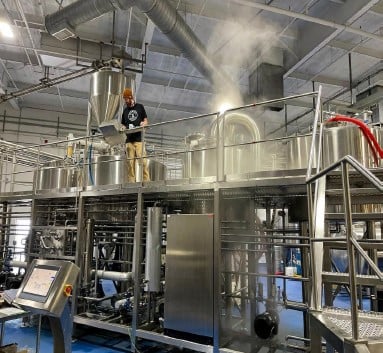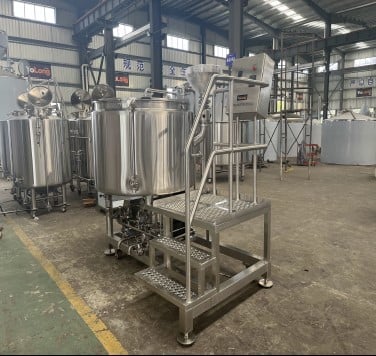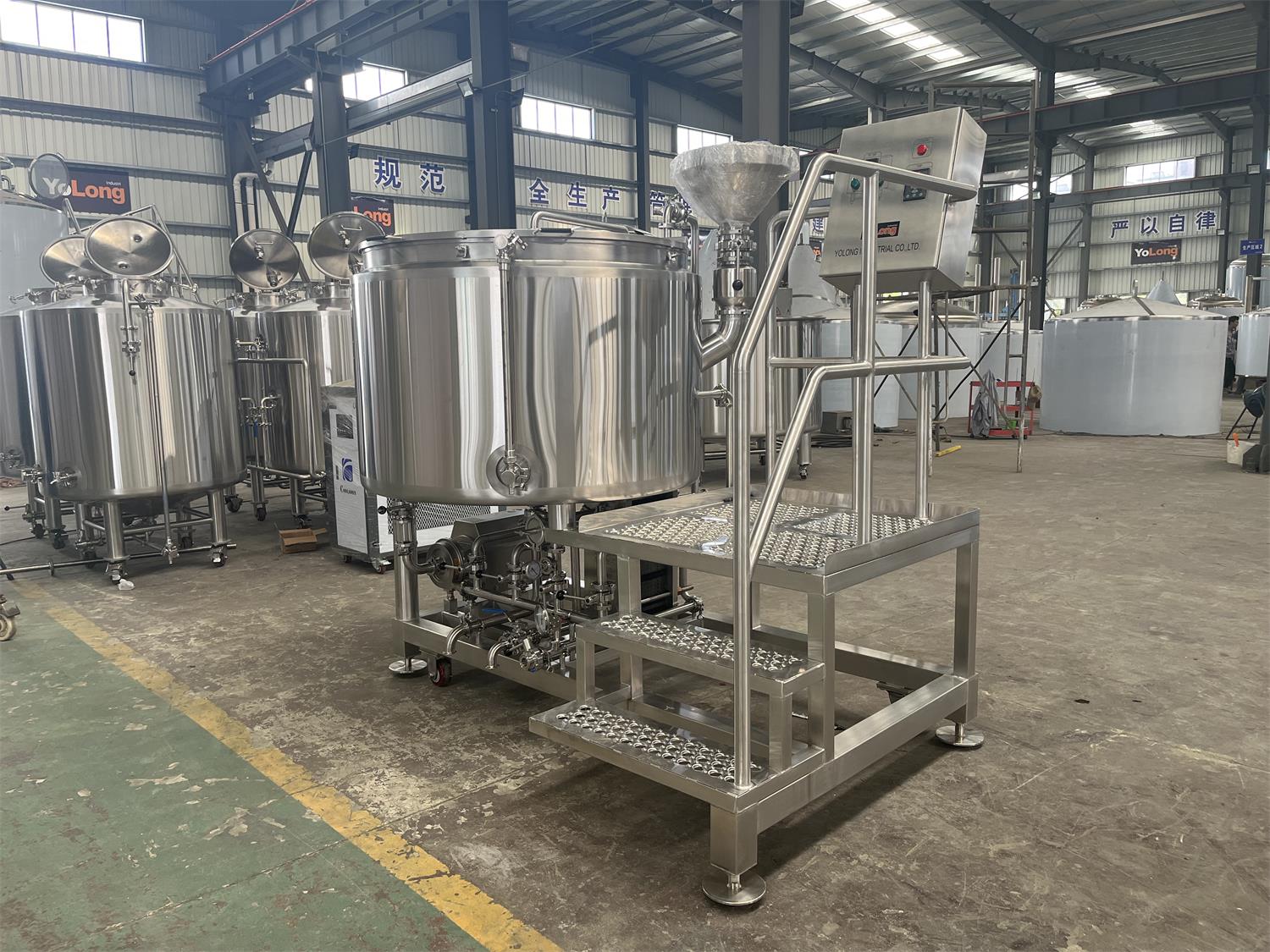Stainless Steel Brewing Tanks
Brewing beer is as much a science as it is an art, and one of the most critical tools for any brewer, whether hobbyist or professional, is the brewing tank. Stainless steel brewing tanks have become the gold standard in the brewing world. If you’re new to brewing or exploring ways to optimize your brewery’s setup, this guide will walk you through everything you need to know about stainless steel brewing tanks—how to choose them, maintain them, and what to consider when investing in these tanks for your brewing process.
Overview: Why Stainless Steel Brewing Tanks?
Stainless steel has long been the go-to material for brewing tanks due to its durability, ease of cleaning, and its ability to maintain the integrity of your brew. Whether you’re brewing a small batch at home or running a commercial brewery, stainless steel tanks are the reliable workhorses of the brewing world.
Stainless steel doesn’t react with the ingredients or the beer itself, which means you’ll get a pure taste. These tanks are resistant to corrosion and can handle the acidic conditions created by beer fermentation. Furthermore, they are designed to withstand extreme temperatures, making them ideal for the brewing process.
Equipment Guide for Stainless Steel Brewing Tanks
When it comes to brewing tanks, there are several types to choose from, each with its specific use and advantages. In this section, we will explore the various types of stainless steel brewing tanks and what makes each one suited for different stages of the brewing process.

Types of Stainless Steel Brewing Tanks
| Tank Type | Description | Purpose in Brewing | Capacity Range | Common Features |
|---|---|---|---|---|
| Mash Tun | Insulated vessel for mashing grains | Converts starches to fermentable sugars | 5 gallons – 60 barrels | False bottom, insulation, temperature control |
| Brew Kettle | Used for boiling the wort | Sanitizes wort and extracts hop bitterness | 5 gallons – 120 barrels | Steam jacket, whirlpool inlet, temperature sensors |
| Fermentation Tank | Vessel where yeast converts sugars to alcohol | Primary fermentation of wort | 10 gallons – 300 barrels | Conical bottom, cooling jacket, pressure relief valve |
| Bright Tank | Tank used for carbonating and maturing beer | Prepares beer for packaging | 5 gallons – 100 barrels | Temperature control, carbonation stone, sampling valve |
| Hot Liquor Tank | Heats water for brewing | Used in the brewing process for mashing and cleaning | 5 gallons – 50 barrels | Insulated, temperature control, CIP system |
Each tank serves a vital role in the brewing process, so it’s important to understand their functions and specifications to make informed decisions when designing or upgrading your brewery.
The Brewing Process: A Deep Dive into Stainless Steel Tank Utilization
The brewing process involves several steps where stainless steel tanks play pivotal roles. Here, we’ll explore how these tanks are used from start to finish.
1. Mashing
The first step in the brewing process is mashing, which occurs in the mash tun. Grains (usually malted barley) are mixed with hot water to activate enzymes that convert starches into fermentable sugars. Stainless steel mash tuns are highly prized because they offer excellent heat retention, preventing temperature fluctuations that can impact enzyme activity. Additionally, the non-reactive surface ensures that no off-flavors are imparted to the wort.
2. Boiling
After the mashing process, the wort is moved to the brew kettle where it is boiled. This is where hops are added to create the bitterness, flavor, and aroma of the beer. Stainless steel brew kettles are designed to withstand high temperatures and allow brewers to control the boil, an essential step for developing the desired beer profile.
3. Fermentation
Once the wort is cooled, it is transferred into a fermentation tank, typically a conical stainless steel fermenter. During fermentation, yeast is added to the wort, and the yeast begins converting sugars into alcohol and CO2. Fermentation tanks often feature cooling jackets to maintain a consistent temperature, as temperature control is crucial to the quality of the beer produced.
4. Conditioning
After fermentation, the beer is transferred to a bright tank where it is carbonated and conditioned. Stainless steel bright tanks are designed to hold pressure, making them ideal for this stage where the beer matures and develops its final flavor profile.
5. Packaging
Finally, from the bright tank, the beer is either bottled, canned, or kegged for distribution. Using stainless steel ensures that the beer remains uncontaminated and preserves its taste throughout the process.
Customization and Design Considerations for Stainless Steel Brewing Tanks
Brewing systems can be highly customized to meet the specific needs of different brewers. From capacity to layout and design, there are multiple factors to consider when setting up or expanding a brewery.
Capacity, Space, and Layout Considerations
| Capacity Range | Ideal for | Space Requirements | Design Features |
|---|---|---|---|
| 5-20 gallons | Home brewing | Small, compact setups | Manual control, smaller tanks |
| 1-10 barrels | Microbreweries | Medium-sized spaces | Semi-automated systems, customizable features |
| 20-100 barrels | Craft breweries | Large commercial spaces | Fully automated systems, CIP systems, integrated cooling |
| 100+ barrels | Large breweries | Significant floor space | High-efficiency designs, automated control systems |
When planning a brewery, it’s crucial to consider the available space and choose tanks that fit not only in terms of capacity but also in the overall layout. The flow of beer from one tank to the next should be seamless, reducing the risk of contamination or errors.
Stainless Steel Brewing Tank Suppliers and Price Range
The price of stainless steel brewing tanks can vary significantly based on factors like size, customization, and additional features. Here’s an overview of popular suppliers and typical price ranges.
| Supplier | Price Range (USD) | Key Features |
|---|---|---|
| SS Brewtech | $1,000 – $10,000 | Home and microbrewery tanks, high-quality materials, customizable designs |
| Blichmann Engineering | $1,500 – $12,000 | Modular designs, advanced brewing technology, energy-efficient tanks |
| Speidel | $2,000 – $15,000 | European-made, durable, and known for precision engineering |
| Stout Tanks & Kettles | $3,000 – $25,000 | Customizable fermenters, conical tanks, high-end features like glycol jackets |
| Custom Metalcraft | $5,000 – $50,000 | Commercial-scale systems, complete brewery solutions, turnkey services |
Choosing the right supplier involves balancing price with the desired quality and features. Smaller-scale brewers may prefer more affordable models, while larger breweries will benefit from higher-end, fully customized systems.
Installation, Operation, and Maintenance of Stainless Steel Brewing Tanks
Stainless steel brewing tanks require proper installation and ongoing maintenance to ensure their longevity and consistent performance. Below is a guide for the critical stages of installation, operation, and maintenance.
| Stage | Key Considerations | Maintenance Tips |
|---|---|---|
| Installation | Ensure proper placement with access to utilities (water, electricity) | Hire professional installers for complex systems |
| Operation | Follow manufacturer’s guidelines for temperature control, pressure settings | Regularly monitor temperature and pressure gauges |
| Maintenance | Clean-in-Place (CIP) systems for automated cleaning | Periodic inspection of welds, valves, and seals; prevent corrosion with regular cleaning |
Maintaining your stainless steel brewing tanks will help extend their life and maintain the quality of the beer produced. Cleaning and sanitizing are critical, especially between brews, to avoid contamination.
How to Choose the Right Stainless Steel Brewing Tank Supplier
When selecting a supplier for your brewing equipment, several factors come into play, from reputation to customer support. Here’s a table that highlights the key things to look for.
| Factor | Why It Matters | Considerations |
|---|---|---|
| Reputation | A well-known, trusted supplier offers peace of mind | Look for suppliers with positive reviews and established industry presence |
| Customization | Allows you to tailor the equipment to your needs | Ask if the supplier offers custom designs, layouts, and additional features |
| Customer Support | Ensures help is available when needed | Ensure the supplier offers support during installation and post-purchase |
| Warranty and Service | Protects your investment | Look for warranties covering defects and offers for extended service agreements |
Choosing the right supplier can make a significant difference in the long-term success of your brewery.
Pros and Cons of Stainless Steel Brewing Tanks
When deciding on stainless steel brewing tanks, it’s essential to weigh the advantages and potential limitations.
| Pros | Cons |
|---|---|
| Durability: Long-lasting, resistant to corrosion | Cost: More expensive than plastic or aluminum tanks |
| Sanitation: Easy to clean, less prone to contamination | Weight: Stainless steel is heavy, requiring proper support |
| Aesthetics: Sleek, professional appearance | Customization: Can be limited with lower-end suppliers |
| Temperature control: With proper insulation, it maintains optimal temperatures | Installation complexity: May require professional installation for larger systems |
Stainless steel tanks offer substantial benefits, but they come at a higher price point and may need specialized handling during setup.

FAQ
About Stainless Steel Brewing Tanks
Here are some frequently asked questions about stainless steel brewing tanks to address any lingering doubts you may have.
| Question | Answer |
|---|---|
| Why choose stainless steel for brewing? | Stainless steel is durable, non-reactive, and easy to clean, making it ideal for brewing. |
| How long do stainless steel brewing tanks last? | With proper care, they can last for decades, outlasting many other materials. |
| What sizes are available? | Tanks range from small homebrew setups (5 gallons) to massive commercial tanks (over 100 barrels). |
| Can I customize my brewing tanks? | Yes, many suppliers offer customization, allowing you to design the tanks to fit your space and brewing needs. |
| What’s the biggest downside of stainless steel tanks? | The cost can be higher than other materials, but the benefits often outweigh the price. |
In conclusion, stainless steel brewing tanks are an invaluable investment for anyone serious about brewing, offering durability, quality, and the ability to scale your production as needed. Whether you are brewing in your garage or running a large commercial brewery, these tanks provide the reliability and functionality that every brewer seeks. By understanding the types, functions, and considerations when purchasing these tanks, you can make informed decisions that will improve your brewing process and product.
Share this entry
Interested in learning more about Brewing Systems including additional details and pricing information? Please use the form below to contact us!
YOLONG BREWERY EQUIPMENT FAQS
- Commercial Brewery / Craft Brewery / Microbrewery / Nanobrewery
- What is The Difference Between Craft Beer and Industrial Beer?
- The Bespoke Differences In Custom Brewing Systems
- Everything You Need to Know About Kettle Souring
- How to Choose Brewing Equipment for Your business?
- How To Choose The-Best Partner To Build Your Commercial Microbrewing System?
- Two Detection Sensors That You Need To Use In Your Brewhouse System
- Remote Control Applications in Brewing Equipment/How does it work?
- How To Clean Your Brand New Brewery Tanks?

